Black gold billionaires: inside the homes of the richest oil barons
Tour the palatial properties bankrolled by black gold
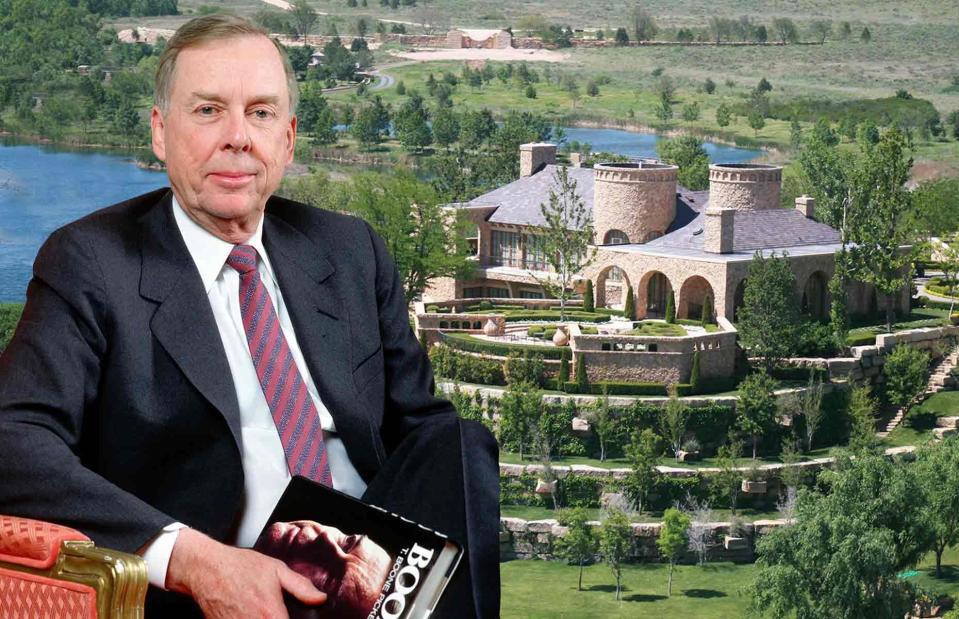
Yvonne Hemsey / Getty Images ; Courtesy Hall and Hall / TopTenRealEstateDeals.com
The planet's petroleum tycoons are famously extravagant when it comes to real estate. Industry magnates past and present have built or bought everything from sprawling mega-mansions and townhouses to a billion-dollar skyscraper, and even a ranch complete with a castle and its own church, airport and golf course.
See for yourself and read on to tour the billionaire homes of the world's richest oil barons.
John D. Rockefeller
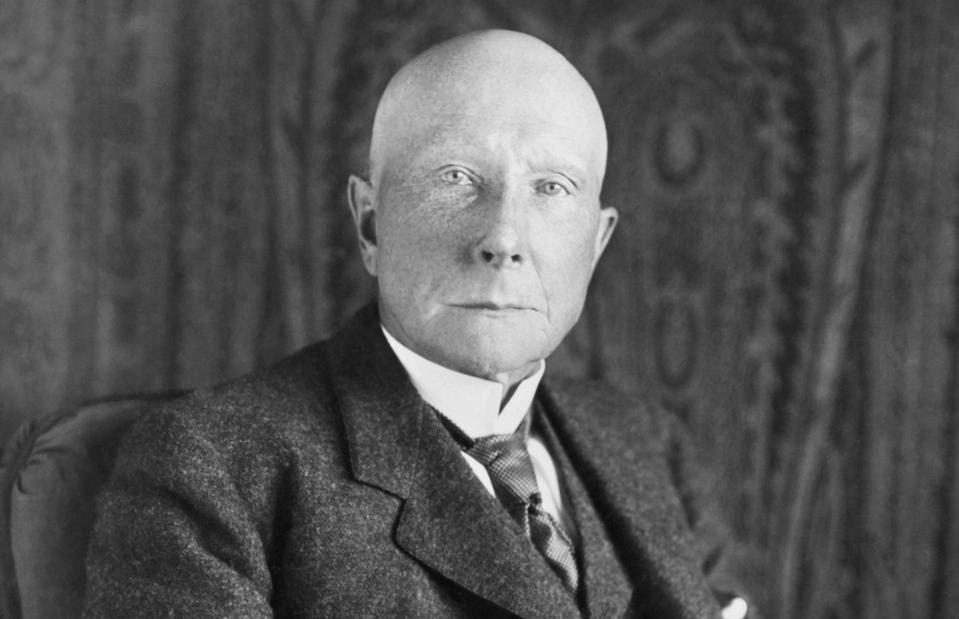
Everett Collection / Shutterstock
Born in upstate New York in 1839, John D. Rockefeller co-founded Standard Oil in 1870 and eventually gained control of a staggering 90% of all oil refineries and pipelines in the US.
Having accumulated a vast fortune, Rockefeller was proclaimed the first-ever dollar billionaire in 1916 and is considered the wealthiest American of all time, not to mention the richest person in modern history.
John D. Rockefeller’s Kykuit estate
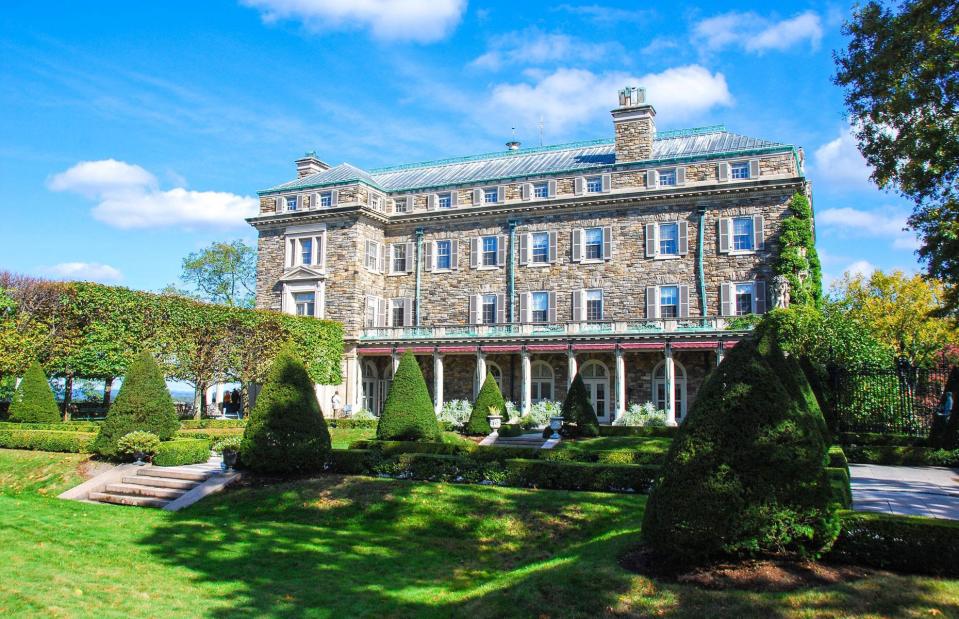
365 Focus Photography / Shutterstock
In 1893, Rockefeller acquired land in Pocantico Hills, New York, overlooking the Hudson River and eventually built his dream home on the expansive plot. Years in the making, Kykuit, which takes its name from the Dutch word for 'lookout', was finally completed in 1913. A sublime example of Georgian Revival architecture, the imposing mansion has six storeys and a total of 40 rooms.
John D. Rockefeller’s Kykuit estate
![<p>Shinya Suzuki / Flickr [CC BY 2.0]</p>](https://s.yimg.com/ny/api/res/1.2/Fth4N.if2Yzzjwx7uXiV9A--/YXBwaWQ9aGlnaGxhbmRlcjt3PTk2MDtoPTYxOQ--/https://media.zenfs.com/en/loveproperty_uk_165/17cda7a853bb347c5da7acb30d189e57)
Shinya Suzuki / Flickr [CC BY 2.0]
Interestingly, the initial plans by architectural firm Delano & Aldrich were for a three-storey structure, but they were ditched midway and the more eminent William W Bosworth was hired to rework the project.
For the interiors, Rockefeller called upon the services of top interior designer Ogden Codman Jr, who decorated the elegant rooms with English antique furniture, collections of prized Chinese and European ceramics, including Ming dynasty pieces bought from the collection of banker J P Morgan, and other precious objects.
John D. Rockefeller’s Kykuit estate
![<p>Shinya Suzuki / Flickr [CC BY 2.0]</p>](https://s.yimg.com/ny/api/res/1.2/IKh8CGqmMG.iYHElmnPWFQ--/YXBwaWQ9aGlnaGxhbmRlcjt3PTk2MDtoPTYxOQ--/https://media.zenfs.com/en/loveproperty_uk_165/df22ea5f60fe819592d20a508a130055)
Shinya Suzuki / Flickr [CC BY 2.0]
The Rockefeller patriarch also equipped his estate with the latest must-have amenities, including a private golf course and tricked-out coach barn filled with gleaming carriages and cars.
Following his death in 1937, the mansion was home to three further generations of the Rockefeller family, with each resident adding to its prestige – particularly the petroleum tycoon's grandson, the 41st US vice president Nelson Rockefeller, who amassed a stunning collection of 20th-century art.
John D. Rockefeller’s Kykuit estate
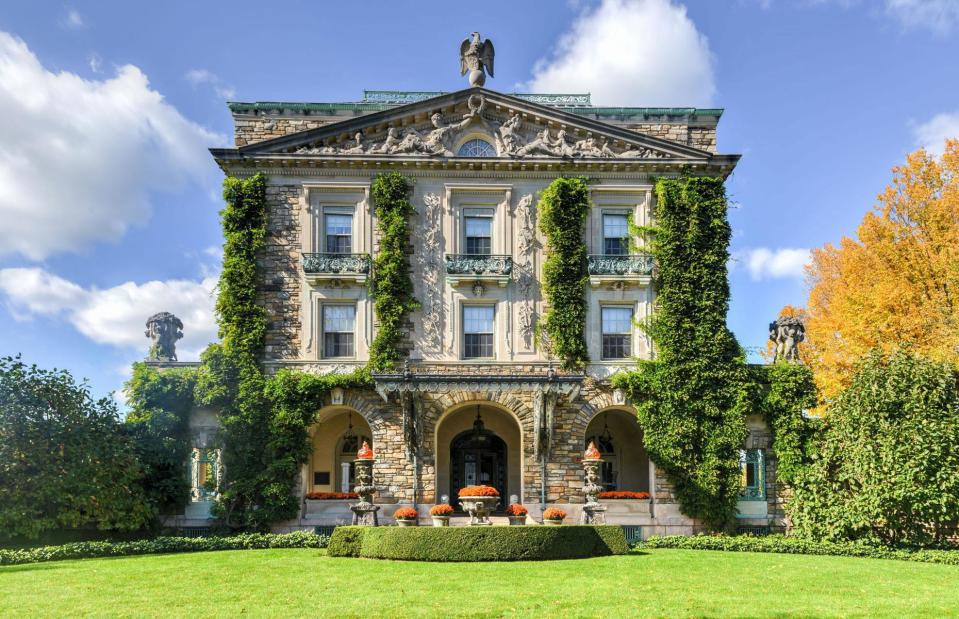
Felix Lipov / Shutterstock
Nelson Rockefeller died in 1979 and Kykuit was later opened to the public for guided tours. Visitors can marvel at Andy Warhol paintings, Henry Moore sculptures and a collection of Picasso tapestries, along with the vintage cars and many lavish furniture pieces, which have been meticulously preserved, as have the manicured Italian gardens.
E. W. Marland

VCG Wilson / Bettmann Archive / Getty Images
E. W. Marland was born in Pittsburgh in 1874 and went on to become a lawyer before making two multimillion-dollar oil fortunes: first in Pennsylvania in the 1900s and then in Oklahoma during the 1920s when he controlled one-tenth of the world's oil and established himself as a philanthropist.
After losing his second fortune following a hostile takeover of his company by J P Morgan, Marland had a stint in Congress and served as governor of Oklahoma from 1935 to 1939.
E. W. Marland's Oklahoma 'Palace on the Prairie'
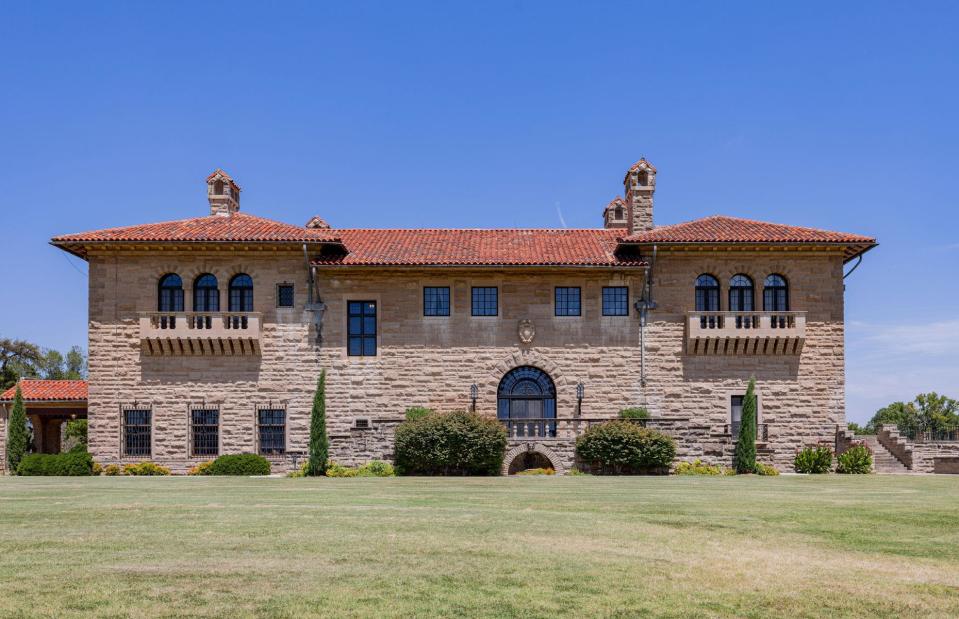
Kit Leong / Shutterstock
During a trip to Italy at the height of his wealth in the early 1920s, the oil mogul fell in love with Florence's 14th-century Palazzo Davanzati and set about constructing a wow-factor mansion in Oklahoma's Ponca City based on the medieval masterpiece.
Dubbed the 'Palace on the Prairie', the 55-room property, which is one of the largest residences in the American Southwest, was built between 1925 and 1928 at a cost of $5.5 million, which is around $100 million (£77.9m) today.
E. W. Marland's Oklahoma 'Palace on the Prairie'
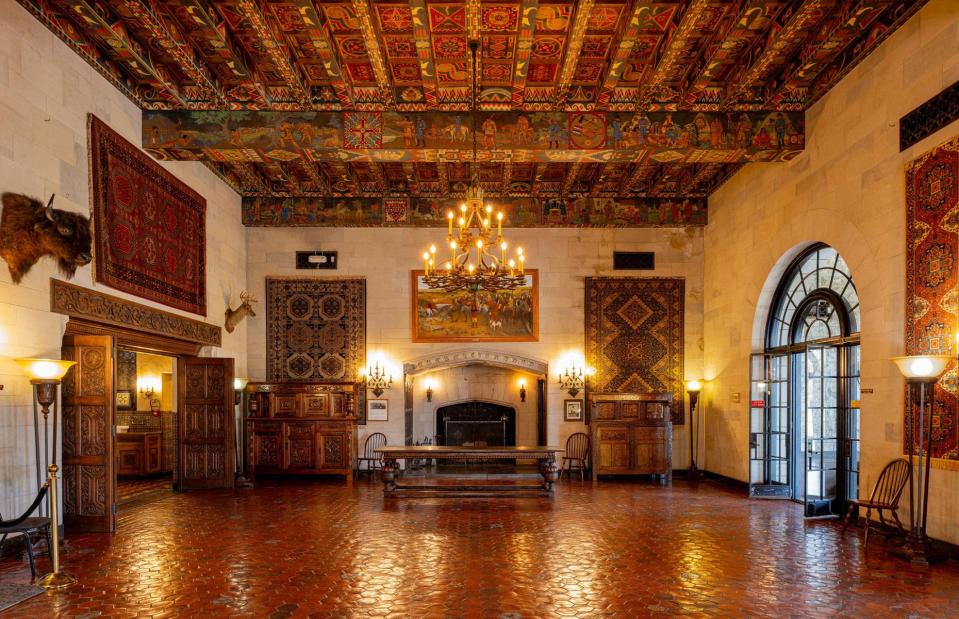
Kit Leong / Shutterstock
Marland hired artisans from Europe to construct the limestone mansion and craft its opulent interiors, which range in style from English Tudor to Italian Renaissance. The property is especially noted for its elaborate ceilings: for instance, this beauty in the medieval-style inner lounge depicts intricate scenes from Oklahoma's history.
E. W. Marland's Oklahoma 'Palace on the Prairie'
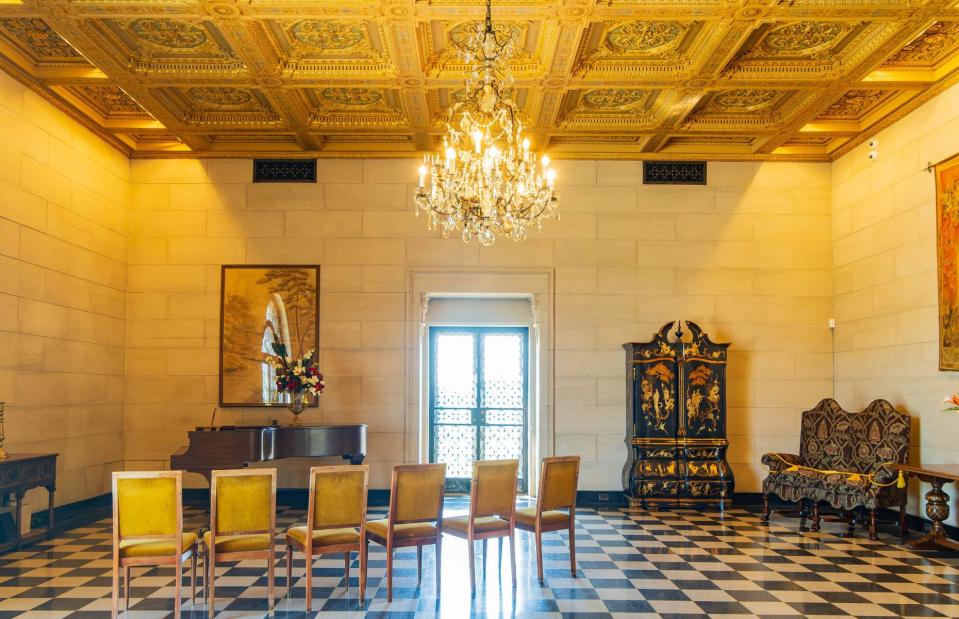
Kit Leong / Shutterstock
The palatial ballroom with its 24-carat gold-plated ceiling is one of the mansion's highlights and was the setting for glittering parties with Oklahoma's high society.
Officially named The Refuge, the house was a gift from Marland to his second wife Lydie, who he married in 1928, the year the mansion was completed.
E. W. Marland's Oklahoma 'Palace on the Prairie'
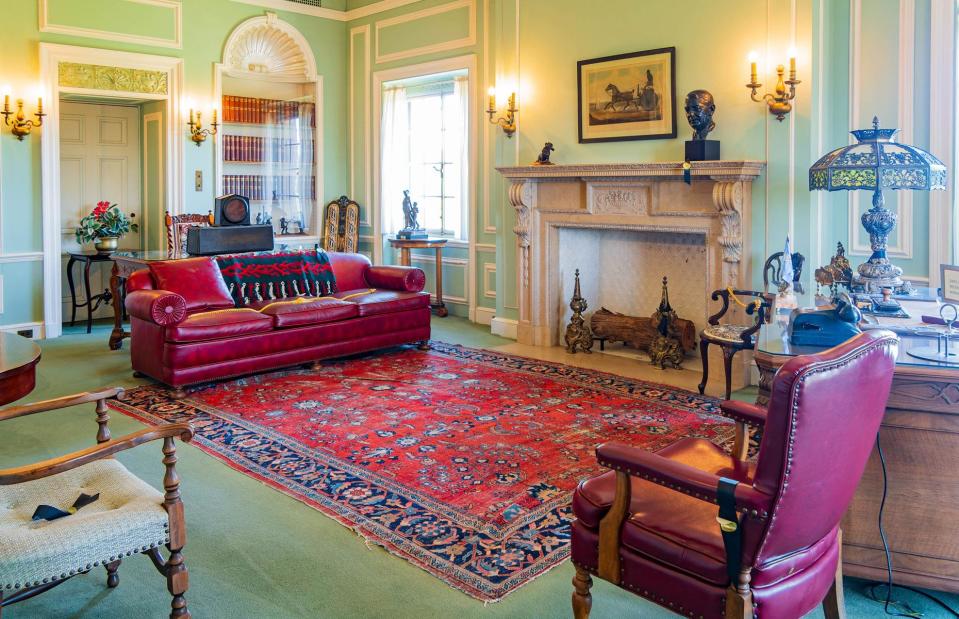
Kit Leong / Shutterstock
After he lost his second fortune, Marland and his young wife couldn't keep up with the utility bills and moved into the bijou artist's studio on the estate.
Following his time as governor, the former oil tycoon moved back to the humble property and in 1941, six months before his death, Marland sold the mansion and the bulk of the estate to a Catholic religious order for just $66,000, which is $1.4 million (£1.1m) in modern money. The property later became a private school and was opened to the public as a museum in 1976.
J. Paul Getty
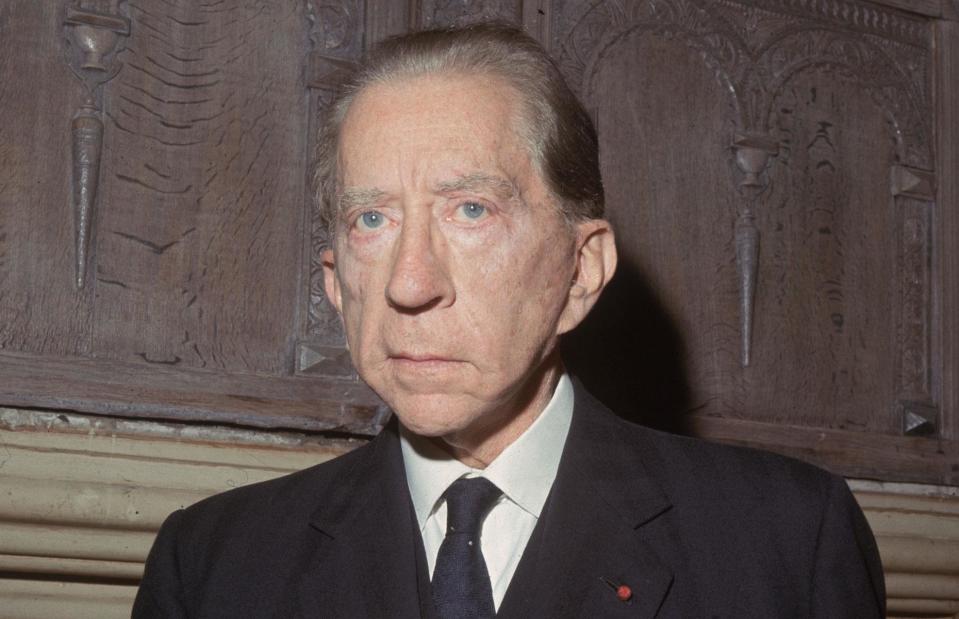
Hulton Archive / Getty Images
Born in Minneapolis in 1892, the patriarch of the famous Getty dynasty made his first million dollars by 1916 and went on to build an immense oil empire that propelled him to billionaire status in the mid-1950s. When Fortune magazine profiled America's richest people in 1957, J. Paul Getty was at the top of the list with a net worth of $1 billion, that's the equivalent of over $11 billion (£8.6n) today.
With his wealth having reached new heights, Getty moved to Europe and was living between Paris' George V Hotel and The Ritz in London when his search for a long-term base led him to a remarkable English estate...
J. Paul Getty's Tudor manor
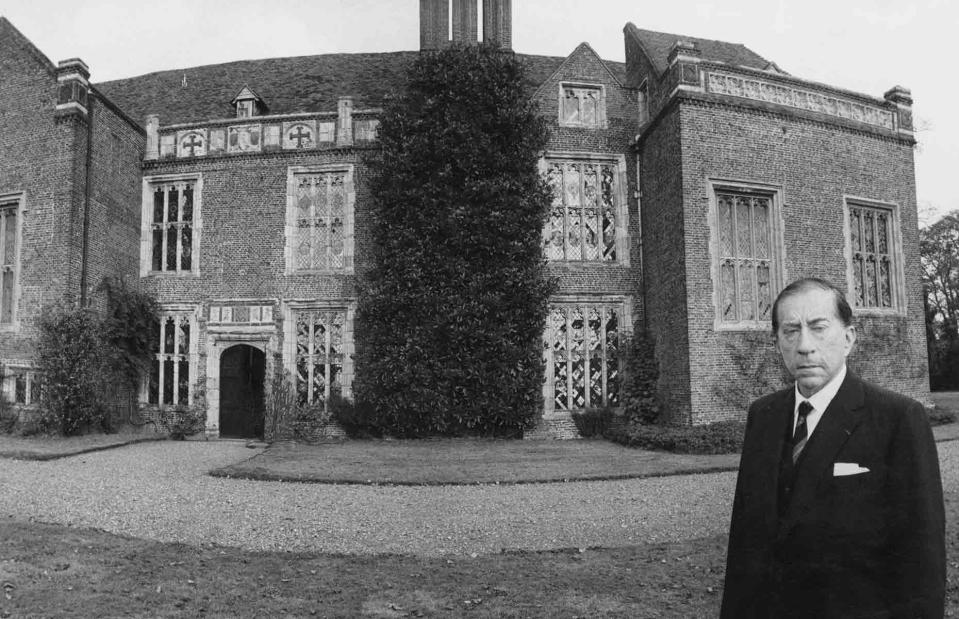
Express Newspapers / Archive Photos / Getty Images
While he was known for his frugality, Getty wasn't averse to splurging on property, art and antiques, though he always drove a hard bargain.
In 1959, the oil tycoon bought a magnificent Grade I-listed Tudor manor in the English county of Surrey from the Duke of Sutherland for the knockdown price of £60,000. In today's money, that's just less than $1.5 million (£1.2m).
J. Paul Getty's Tudor manor
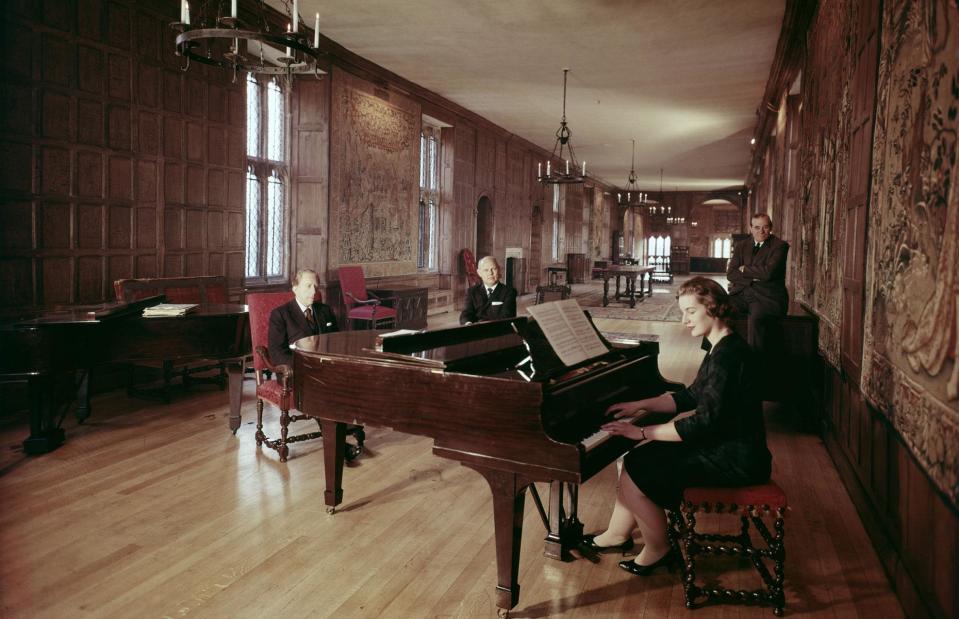
Archive Photos / Getty Images
Dating from the early 16th century, the sprawling 72-room Sutton Place is one of England's finest manor houses. In fact, it's said that Henry VIII was once a guest in its halls.
Pictured here in 1960 enjoying a piano recital in his new home, Getty packed the historic property with fabulous art and antiques. He's said to have displayed a priceless painting by Flemish artist Rubens in the Great Hall, portraits by Gainsborough in the library and a selection of artwork by Renoir in his bedroom.
J. Paul Getty's Tudor manor

Associated Press / Alamy Stock Photo
The tranquil grounds and swimming pool are captured here in 1974 when Getty opened the gates of his estate to more than 5,000 of his Surrey neighbours to raise money for a local charity. The property's aloof owner reportedly did not make an appearance at the event.
The oil tycoon made some amendments to the mansion during his tenure. Most famously, he installed a payphone for guests, which was framed by an enamelled sign that read 'Public telephone'.
J. Paul Getty's Tudor manor
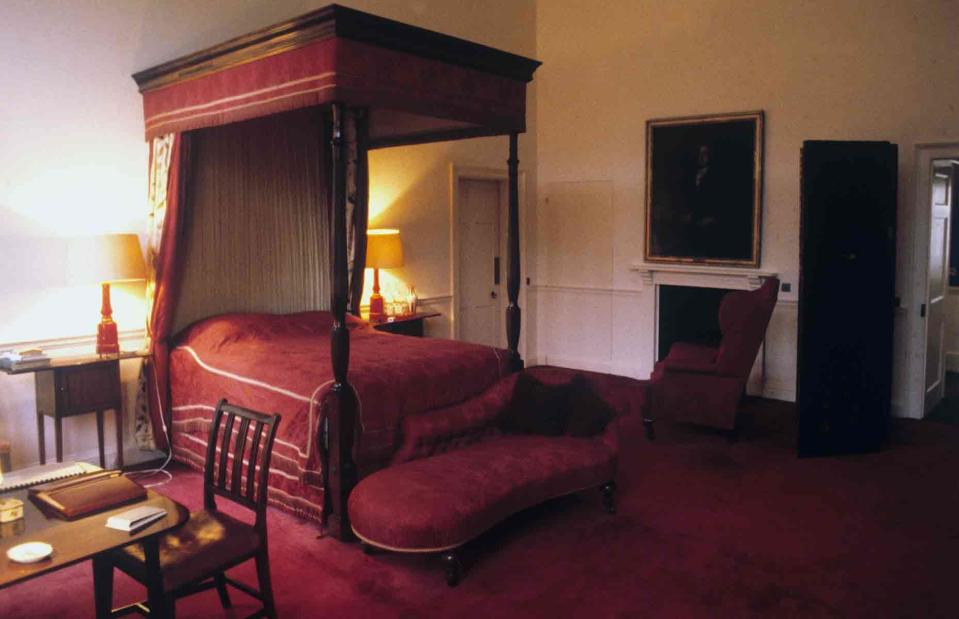
PA Images / Alamy Stock Photo
Here is the Oriel suite, complete with a four-poster canopied bed clad in regal red brocade and a matching chaise lounge. It was one of 10 bedroom suites in Sutton Place where Getty and his family would have retired to.
The oil baron passed away at the property in 1976 at the age of 83. Fittingly, fellow art collector Stanley J Seeger purchased the manor from Getty's estate and used its historic halls to display his vast art collection.
J. Paul Getty's California hacienda
![<p>Tavo Olmos / Library of Congress [Public domain]</p>](https://s.yimg.com/ny/api/res/1.2/dIXwofGxVfZKEM340S_i9A--/YXBwaWQ9aGlnaGxhbmRlcjt3PTk2MDtoPTYxOQ--/https://media.zenfs.com/en/loveproperty_uk_165/667e45555622fad285490f4fe186876a)
Tavo Olmos / Library of Congress [Public domain]
Despite his move to England, Getty had held on to his home in the US. Back in 1946, the oil magnate had acquired 64 acres (25.9ha) in Malibu and renovated the hacienda on the property known as the Ranch House. It served as his US base until 1951 when he decamped to Europe.
Following the move, Getty had the estate transformed into a museum to showcase his peerless art collection.
J. Paul Getty's Roman-inspired villa
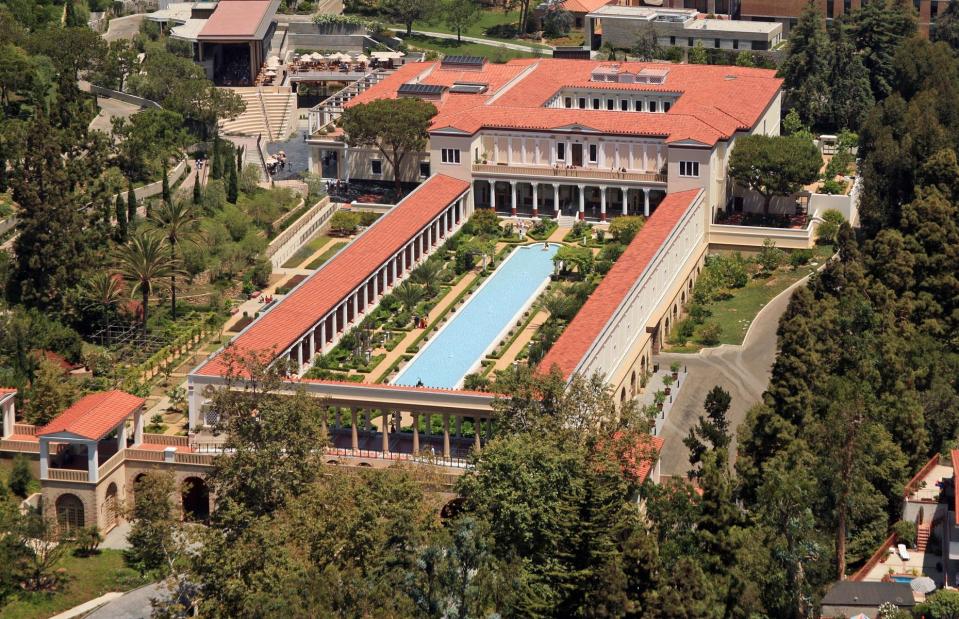
Scott Tucker / Alamy Stock Photo
The J. Paul Getty Museum at the Ranch House opened in 1954. As the years went by, Getty's collection mushroomed and outgrew his former US home.
From his manor across the pond, the oil tycoon set about planning a stunning new building on the site to house artworks from the Ancient World and in 1974 the Getty Villa was completed. Modelled after a first-century Roman villa, it has to be one of the most unique and beguiling structures in the US.
J. Paul Getty's Roman-inspired villa
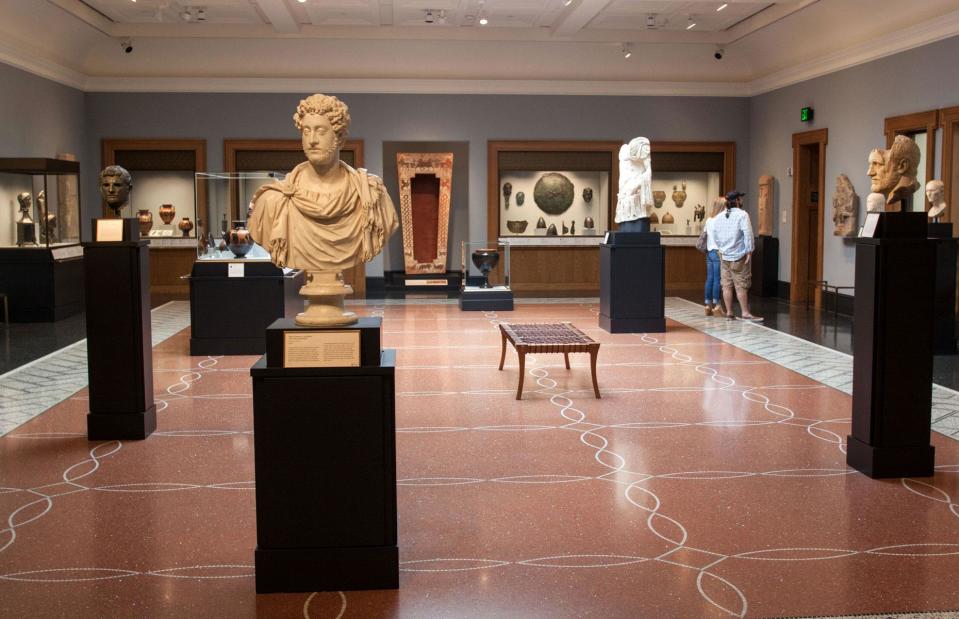
FORRAY Didier / SAGAPHOTO.COM / Alamy Stock Photo
Sadly, Getty died without having ever stepped foot in his villa but he was buried on the property and left a large chunk of his fortune to the museum.
The institution was bequeathed an estimated $700 million of the late tycoon's fortune, which translates to $3.9 billion (£3bn) today, breaking the record for the largest-ever donation to the arts at the time.
T. Boone Pickens

Stephen Lovekin / Getty Images
T. Boone Pickens was born in Oklahoma in 1938. He started his career in Texas as a wildcatter – someone who drills exploratory oil wells – before founding Mesa Petroleum, which by the 1980s had grown to become one of America's leading independent oil and natural gas companies.
A billionaire by the 2010s, Pickens went on to become a legendary corporate raider, a renewable fuels proponent and a major philanthropist, donating over a billion dollars to good causes during his lifetime.
T. Boone Pickens’ Mesa Vista Ranch
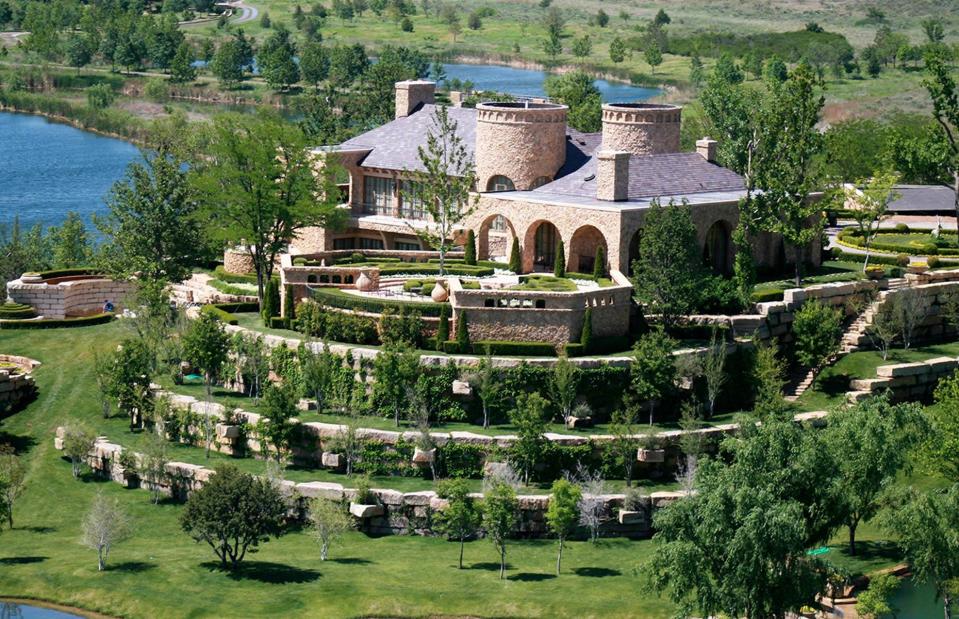
Courtesy Hall and Hall / TopTenRealEstateDeals.com
In 1971, Pickens bought a 2,900-acre (1,173ha) parcel near Pampa in the Texas Panhandle, which he named Mesa Vista Ranch.
Over the decades, the oil tycoon spent many millions of dollars buying up surrounding land and developing the ranch, which grew to encompass over 100 square miles (259sqkm), bigger than the entire city of Arlington in the middle of the state. Pickens really went to town, erecting multiple buildings on the ranch, including the castle-like lodge compound.
T. Boone Pickens’ Mesa Vista Ranch

Courtesy Hall and Hall / TopTenRealEstateDeals.com
At 25,000 square feet (2,322sqm), the lodge is the ranch's largest structure and boasts a conference centre, library, 30-seat theatre and catering kitchen.
The 11,500-square-foot (1,068sqm) Lake House is the next biggest building on the ranch. It has no end of luxury finishes, from oak vaulted ceilings to travertine flooring and even a stained-glass front door that once graced Bing Crosby's mansion.
T. Boone Pickens’ Mesa Vista Ranch
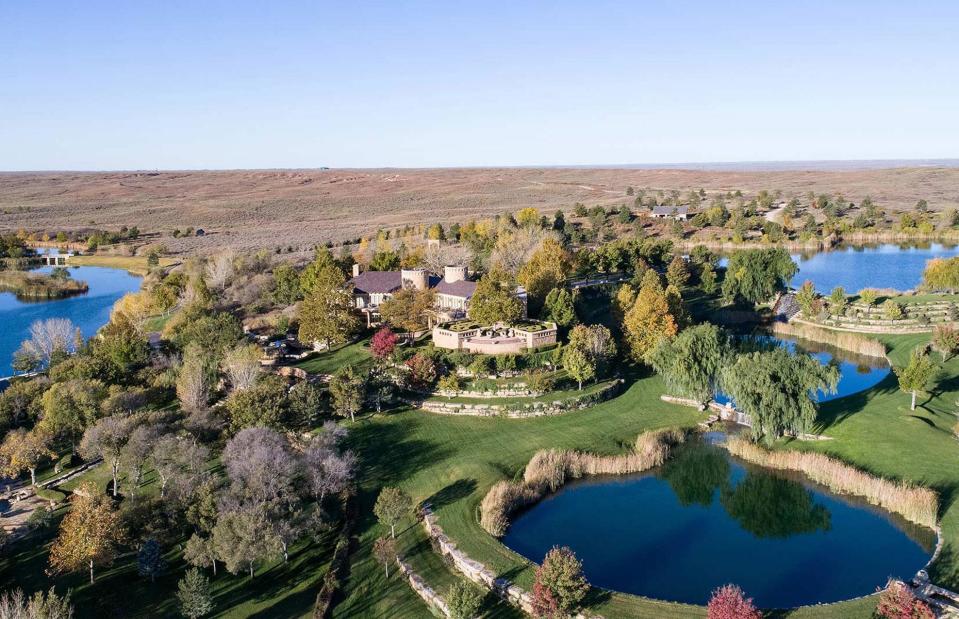
Courtesy Hall and Hall / TopTenRealEstateDeals.com
Other structures on the vast ranch include a five-bedroom family house, a three-bedroom gatehouse and an 11,000-square-foot (1,021sqm) dog kennel. Pickens' white-frame childhood home in Oklahoma was even moved to the ranch. The tycoon also built a chapel on the property, where he married his fifth wife in 2014. In addition to acres upon acres of grounds, the property features 20 manmade lakes, a golf course and tennis court.
T. Boone Pickens’ Mesa Vista Ranch

Hall and Hall / TopTenRealEstateDeals.com
Most impressive of all, Mesa Vista Ranch has its own FAA-approved airport with a 6,000-foot-long (1,828m) runway and its own hangar.
In 2017, Pickens announced he was getting his affairs in order and was offloading the ranch with pretty much everything from the furniture to the dogs in the kennels included, adding that the proceeds would be donated to his charitable foundation. It went on the market with Hall and Hall for a whopping $250 million (£195m).
When Pickens died in 2019, the ranch still hadn't been sold. Featured on TopTenRealEstateDeals.com, it was eventually shifted in 2022 in two parts after the asking price was reduced to $170 million (£133m).
Len Blavatnik
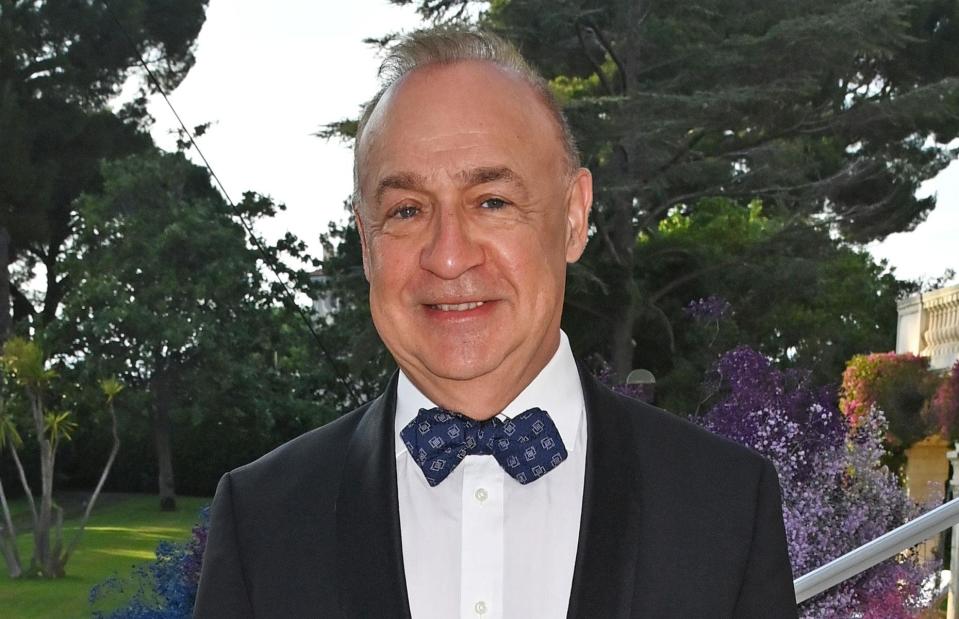
Dave Benett / Getty Images
A Ukrainian-born American citizen with dual British nationality, Len Blavatnik made a beeline for the US in 1978 when his home country was under Soviet rule. He made his first fortune from Russian oil firm TNK-BP, from which he's since divested.
Currently worth $30.2 billion (£23.6bn), the tycoon's numerous interests include sizeable stakes in plastics colossus LyondellBasell and real estate platform Opendoor, as well as majority ownership of Warner Music Group. He's also a big-time philanthropist and was knighted in 2017 by the late Queen Elizabeth II for his charitable endeavours.
Len Blavatnik’s Manhattan townhouse
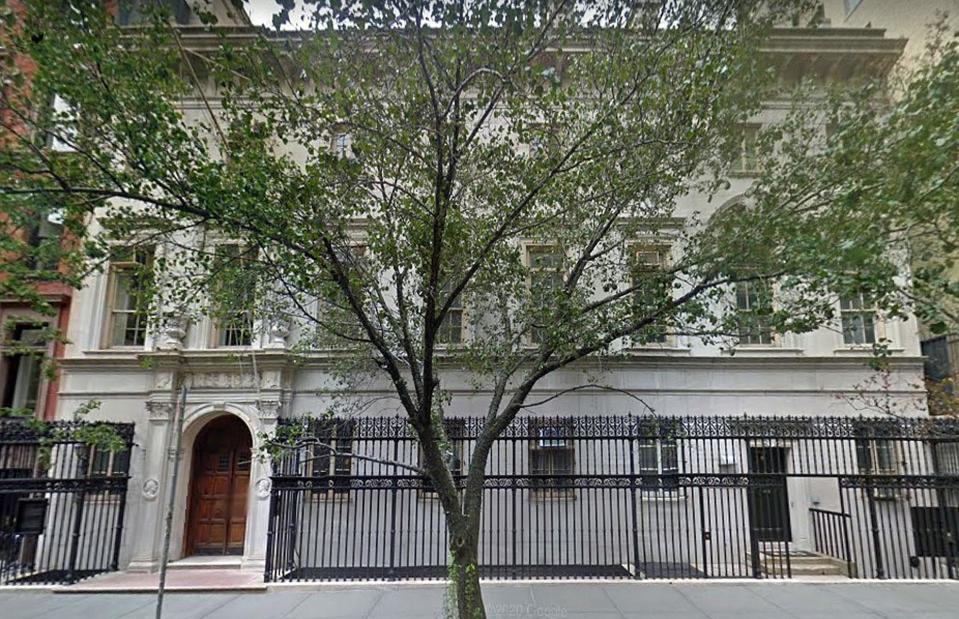
Google Street View
Blavatnik has a remarkable Manhattan real estate profile, holding the deeds to a number of highly sought-after properties in the New York borough. The mogul kicked things off in 2005 when he bought the storied William Ziegler House for just under $31.3 million (£24.4m). The Upper East Side gem is the former home of the New York Academy of Sciences.
Len Blavatnik’s Upper East Side co-op and townhouse
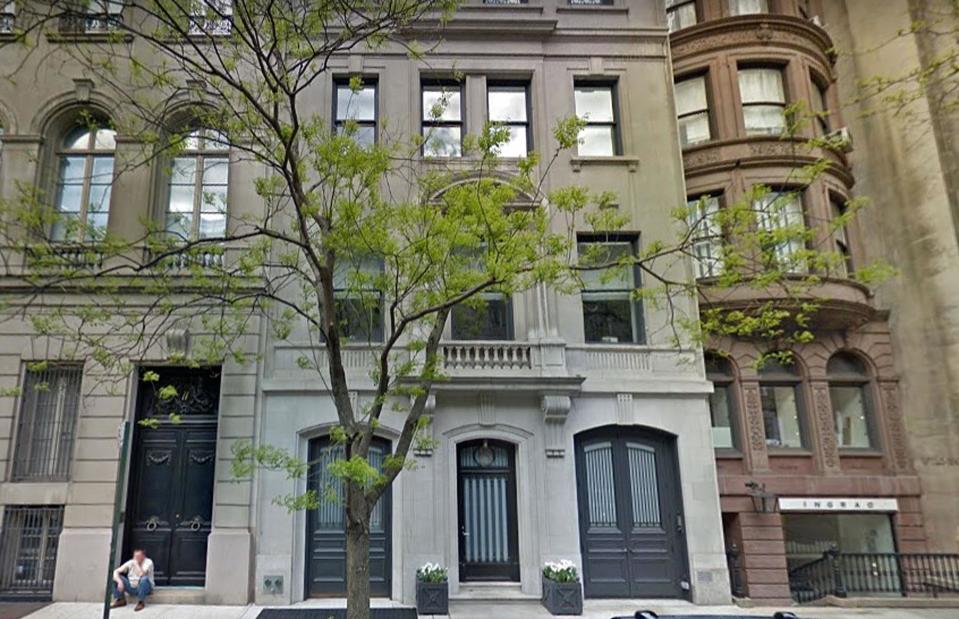
Google Street View
A year later in 2006, Blavatnik spent $27.5 million (£21.4m) on a 14-room co-op in an exclusive Fifth Avenue building, which he sold several years later to the chairman of Estée Lauder.
Then in 2007, the billionaire paid $50 million (£39m) for this five-storey townhouse on East 64th Street, a couple of blocks away from the William Ziegler House.
Len Blavatnik’s latest Fifth Avenue co-op

Richard Levine / Alamy Stock Photo
Blavatnik dug even deeper in 2014 when he broke the record for the most expensive New York co-op after coughing up $77.5 million (£60.4m) for a 14-room duplex at another prestigious Fifth Avenue address. Blavatnik bought the five-bedroom unit from Woody Johnson, the New York Jets co-owner, who went on to serve as US ambassador to the UK during the Trump administration.
However, Blavatnik bought his most expensive New York property in 2018. The tycoon paid a record-breaking $90 million (£70.2m) for the mega-mansion and it now houses a contemporary art gallery.
Len Blavatnik’s London villa
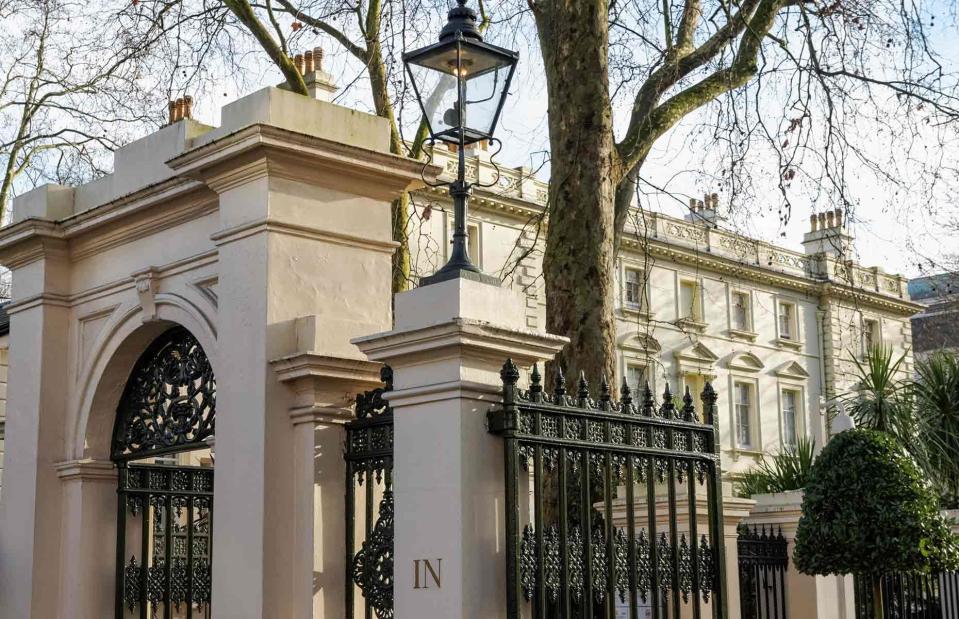
Marcin Rogozinski / Alamy Stock Photo
Blavatnik's real estate collection extends across the Atlantic to London too. Situated on one of the city's most expensive streets, the ultra-exclusive Kensington Palace Gardens, Blavatnik bought this Italianate villa in 2004 for $52.6 million (£41m).
The tycoon is said to have spent hundreds of millions of pounds on renovations in 2013 as part of an ambitious two-year overhaul of the property. New additions to the mansion include an 82-foot (25m) swimming pool that transitions from indoors to outdoors, a hot tub, gym and cinema, as well as an underground garage with a car lift.
Mukesh Ambani

SUJIT JAISWAL / AFP via Getty Images
Mukesh Ambani inherited half his father's business empire in 2002 including oil and diversified conglomerate Reliance Industries, which the magnate has steered to become India's most valuable private sector company and number one exporter.
Needless to say, Ambani is very rich indeed. His net worth stands at $123.3 billion (£96.3bn), which makes him Asia's wealthiest person.
Mukesh Ambani’s billion-dollar Antilia skyscraper
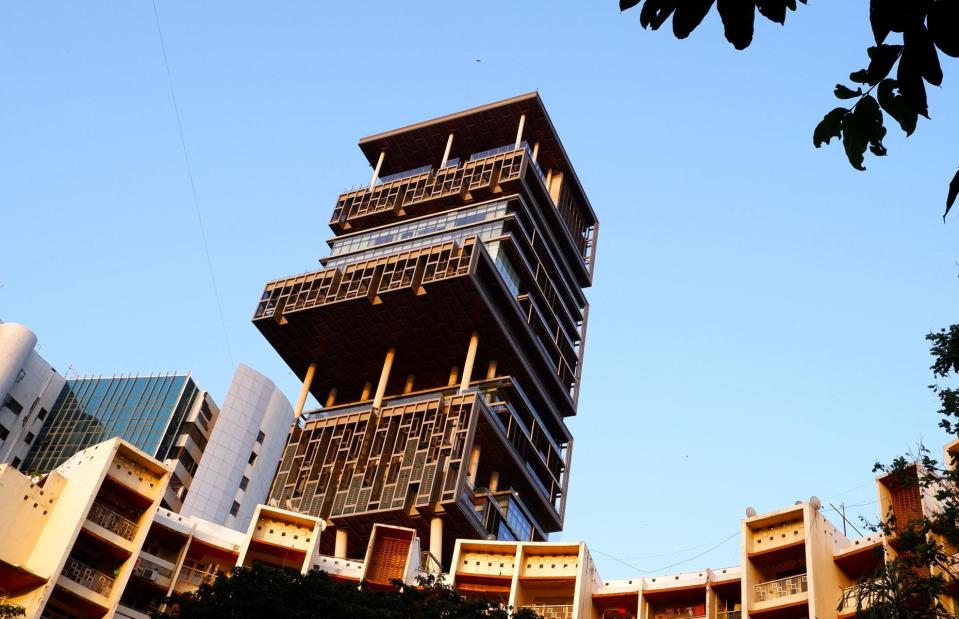
RAMESH R NAIR / Shutterstock
Ambani has a magnificent home to match his vast fortune: a 27-storey, 400,000-square-foot (37,161sqm) skyscraper that was valued at upwards of $1 billion (£781m) not long after its completion and hailed as the most expensive home in the world.
Located on Mumbai's upmarket Altamount Road, the sensational tower stands 568 feet (173m) tall and is named Antilia after a mythical island in the Atlantic. The mega-mansion was constructed to withstand a magnitude 8 earthquake and is run by a staff of 60. It's also where members of the Ambani family host high-society events for their inner circle.
Mukesh Ambani’s billion-dollar Antilia skyscraper
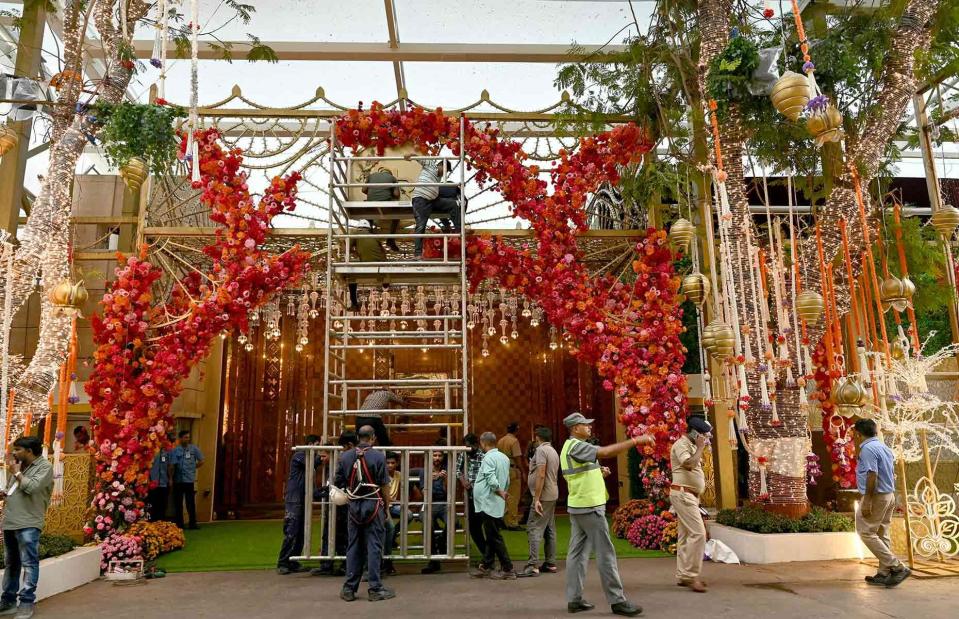
INDRANIL MUKHERJEE / AFP via Getty Images
On 3 July 2024, the gates of Antilia were dressed to impress to mark the wedding of the tycoon's son, Anant Ambani, to Radhika Merchant. The couple's mameru – a traditional pre-wedding Gujarati ceremony – took place at the dynasty's extravagant home. String lights and flower garlands festooned the entrance, while musicians welcomed guests in with traditional music.
Photographs of the mega-mansion's opulent interior are rarely shared, though we have had a few glimpses over the years...
Mukesh Ambani’s billion-dollar Antilia skyscraper

Mumbai Indians / YouTube
The tycoon's wife, Nita, is pictured here in video footage from the YouTube channel of the Mumbai Indians' cricket team carrying the Indian Premier League trophy through Antilia's foyer in 2019. Nita has owned the Mumbai Indians since 2008.
Decorated with shimmering chandeliers, elaborate floral arrangements, Murano glass mirrors and a hand-carved white marble fountain, the entrance hall certainly makes a grand first impression.
Elsewhere, the duplex salon is equally impressive with its soaring ceiling, swathes of windows and gold-plated fixtures and furnishings. Amenities-wise, Antilia has it all, and then some.
Mukesh Ambani’s billion-dollar Antilia skyscraper

Mumbai Indians / YouTube
Nita is captured here in the mansion's ornate temple, which features walls clad in embossed white marble, glittering chandeliers and marble Hindu idols.
As well as the temple, the sprawling home contains numerous pools, three helipads, nine high-speed lifts, a cavernous ballroom, a 50-seat cinema and a six-floor garage. There's also yoga and dance studios, a hotel-worthy spa and countless bedrooms and guest suites. The Ambanis even had an ice cream parlour and snow room installed, where they can escape the blistering Mumbai heat.
Roman Abramovich

Mikhail Svetlov / Getty Images
Roman Abramovich made his fortune following the collapse of the USSR by buying up state oil and natural gas assets on the cheap. The most famous of Russia's oligarchs, Abramovich is best known for being the former owner of Chelsea Football Club, which he was forced to relinquish in 2022 after the UK slapped him with sanctions. Abramovich has also been sanctioned by the EU, Canada, Australia and Switzerland for his alleged links to President Putin's warmongering regime.
As a consequence, the tycoon's wealth has taken quite a hit. It currently stands at $9.7 billion (£7.6bn), down from $14.5 billion (£11.3bn) in 2021.
Roman Abramovich’s NYC mansions

Associated Press / Alamy Stock Photo
Abramovich notched up a stellar property profile in the West before he became persona non grata. Between 2014 and 2018, the oligarch splashed over $90 million (£70.3m) on four adjoining townhouses on Manhattan's Upper East Side. He reportedly intended to convert them into a 31,500-square-foot (2,926sqm) mega-mansion at a cost of around $100 million (£78m), according to plans obtained by the New York Post. He also bought another rowhouse in the area.
As relations between Russia and the West deteriorated, ownership of the townhouses was passed in 2018 to the oligarch's ex-wife Dasha Zhukova. It looks like the tycoon's development plans went ahead, as the adjacent homes are pictured here undergoing construction work in 2022.
Roman Abramovich's London manor
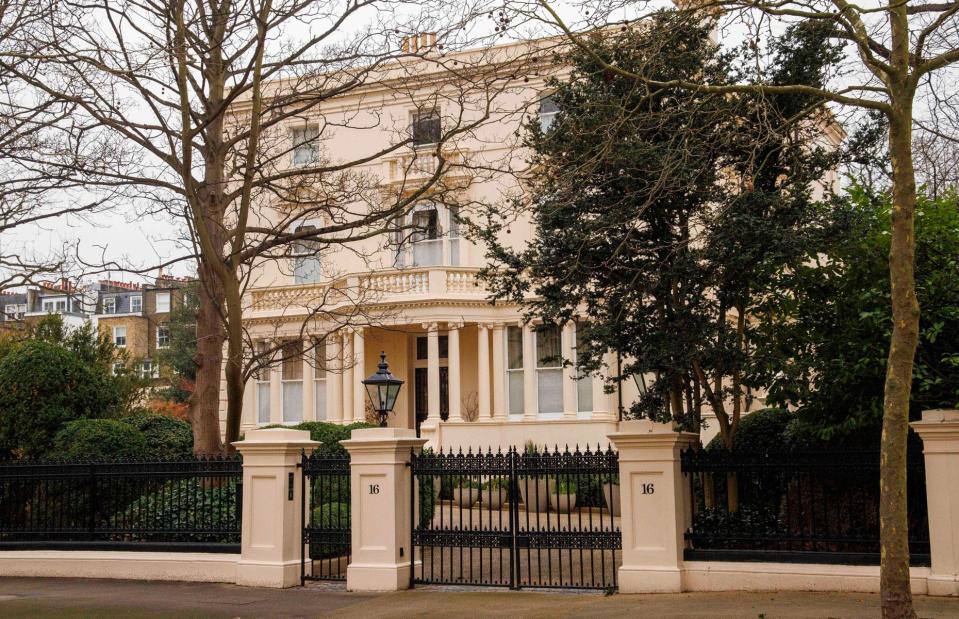
Mark Thomas / Alamy Stock Photo
Abramovich probably wishes he'd transferred ownership of his London mansion, too. The fossil-fuel magnate bought the 15-bedroom Victorian pile in the elite Kensington Palace Gardens in 2009 for $115 million (£90m). Valued by local estate agents at $160 million (£125m) in 2018, it's among the assets frozen by the UK government.
According to The Guardian, Abramovich owns scores of high-end properties in the UK with an estimated value of $320 million (£250m).
Roman Abramovich's London penthouse
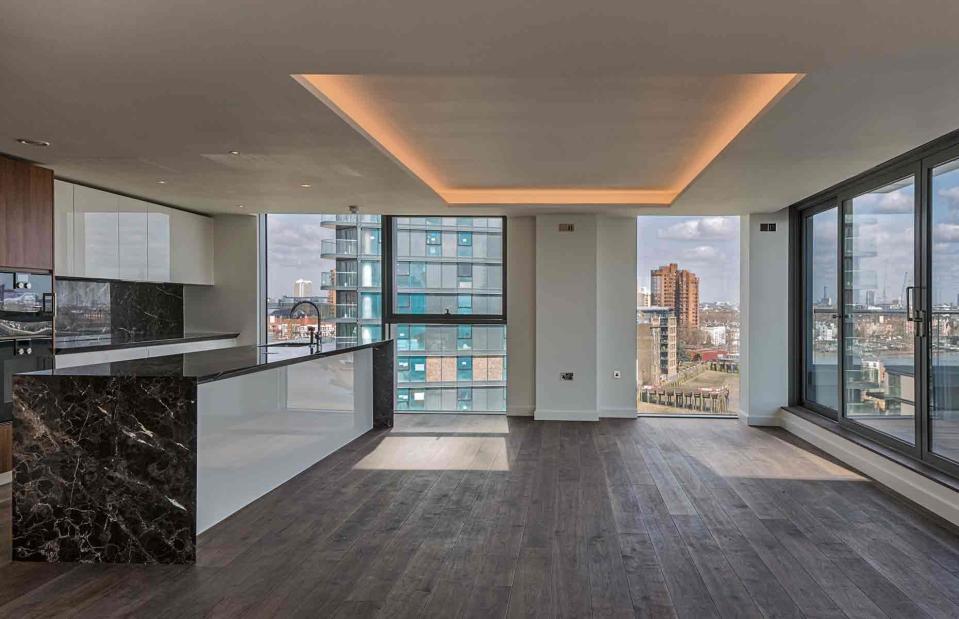
Archimage / Alamy Stock Photo
In 2022, the newspaper tallied up the UK properties deemed by the Organized Crime and Corruption Reporting Project (OCCRP) to belong to Abramovich. They include two townhouses in London's Belgravia, 42 flats and apartments in the city's Chelsea Village, plus a penthouse apartment in the Chelsea Waterfront development, which the oil tycoon bought in 2018 for $38 million (£30m).
Pictured here is one of the Chelsea Waterfront penthouses just after construction was completed in 2018, which may resemble the unit Abramovich snapped up.
Roman Abramovich's French Riviera château
![<p>Aimelaime / Wikimedia Commons [Public domain]</p>](https://s.yimg.com/ny/api/res/1.2/KVa.rc13FKGc79uF58Jk9Q--/YXBwaWQ9aGlnaGxhbmRlcjt3PTk2MDtoPTYxOQ--/https://media.zenfs.com/en/loveproperty_uk_165/08492f879e692781571ce39d855d6abf)
Aimelaime / Wikimedia Commons [Public domain]
Abramovich's French real estate empire is also subject to sanctions. In April 2022, the French government announced that they had seized 33 properties belonging to the oligarch, including the Château de la Croë, his lavish vacation home on the Côte d'Azur. The oil baron is said to have spent €100 million ($108m/£84.5m) on restoring the historic villa.
According to The Mirror, the maligned magnate is currently living in Istanbul in a mansion he's renting for $51,000 (£40k) a month.
David Koch

Neilson Barnard / Getty Images
Born in 1940, David Koch joined the family petroleum refining business in 1970 and eventually headed the diversified Koch Industries, America's second-largest privately held company, together with his brother Charles. The late tycoon, who was a prominent supporter of conservative causes, became one of the richest people in the US. At the time of his death in 2019, Koch was worth $50.5 billion (£39.3bn).
With the spoils of his oil empire, the mogul built up quite the collection of real estate across the US over the years...
David Koch's Park Avenue duplex
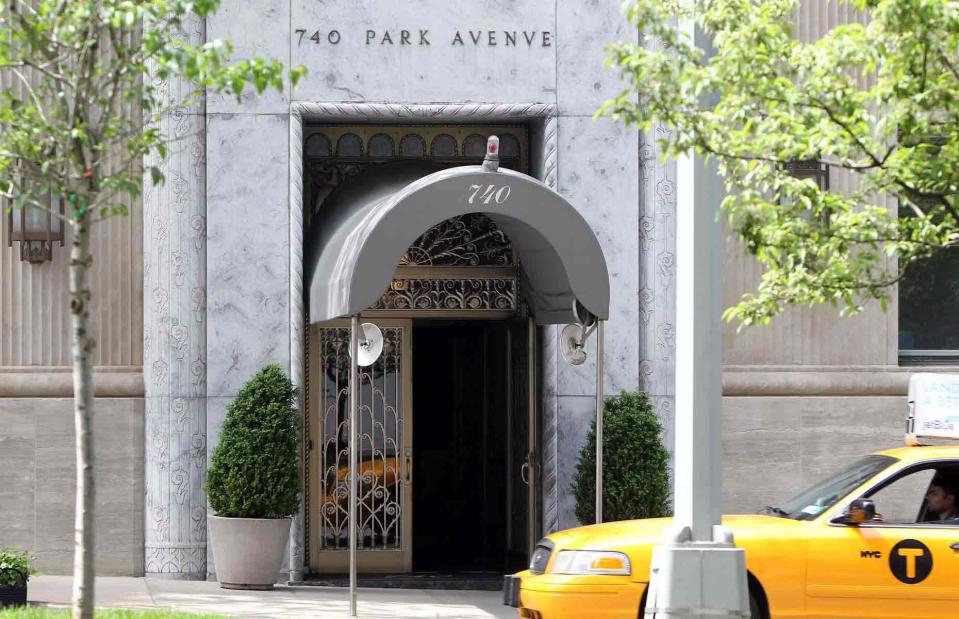
Abaca Press / Alamy Stock Photo
Purchased in 2004, Koch and his wife, Julia, called an 18-room duplex on New York City's Park Avenue their primary home. The esteemed Manhattan co-op counts the likes of fellow American oil magnate John D Rockefeller among its most storied past residents.
According to Business Insider, applicants to the exclusive building must have at least $100 million (£77.9m) in liquid assets to be considered to join the ultra-wealthy community. But that's not the only Big Apple property the tycoon had in his portfolio...
David Koch’s Manhattan townhouse
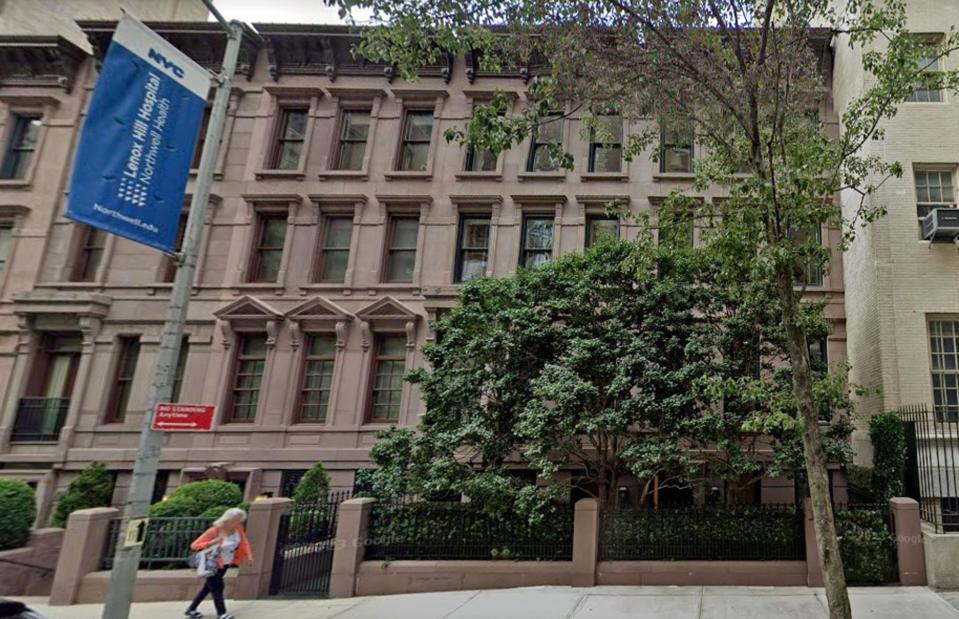
Google Street View
In 2018, Koch dropped just over $40.2 million (£31.3m) on this renovated six-storey brownstone in the heart of Manhattan's Upper East Side. The price tag may seem steep but the couple actually bagged a bargain given the 15,000-square-foot (1,393sqm) townhouse was originally listed for $51 million (£39.7m).
Since her husband's death in 2019, Julia Koch has been downsizing and getting rid of some of the New York properties they owned together. The townhouse was sold in July 2023 to an undisclosed buyer for $41 million (£31.9m).
David Koch’s Palm Beach mansion
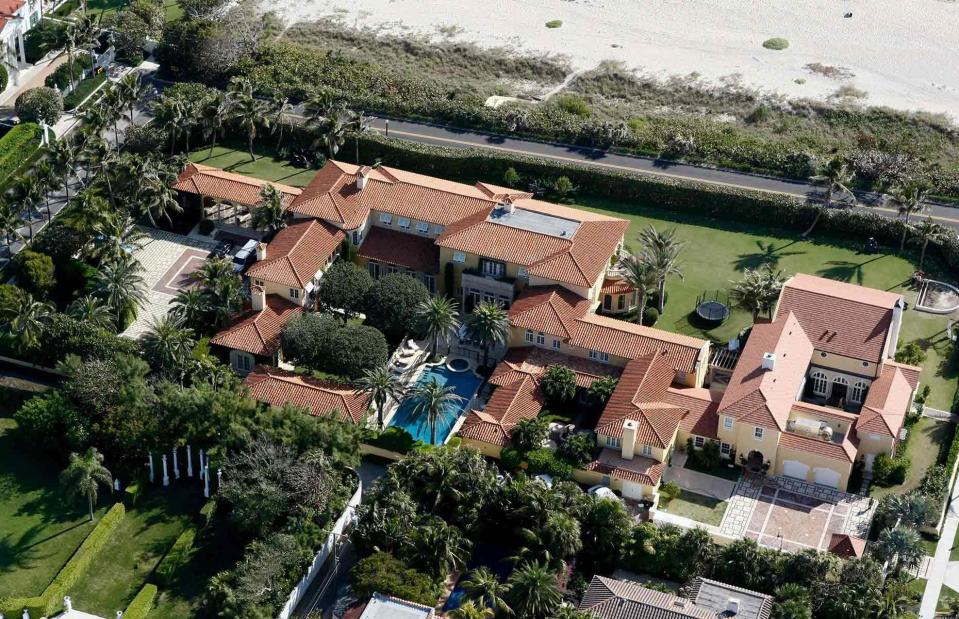
ZUMA Press Inc / Alamy Stock Photo
When Koch wanted to escape the bitter East Coast winters, he had a welcome sanctuary in the form of El Sarmiento, a magnificent estate in Florida's Palm Beach. Perched on the shoreline overlooking the glittering North Atlantic Ocean, the oil baron purchased the Art Deco mansion in 1998 for $10.5 million. When adjusted for inflation, that would be around $20.2 million (£15.7m) today.
The Kochs carried out a three-year renovation on the landmark home before moving in. According to Business Insider, they expanded the mansion's floor plan to a sprawling 30,000 square feet (2,787sqm).
David Koch’s Hamptons holiday home

Google Earth
Back in the state of New York in the affluent enclave of Southampton, Koch had another oceanfront holiday home at his disposal. The ideal escape from city life, the seven-bedroom home is located on Meadow Lane, which is also known locally as Billionaire Lane. The four-acre (1.6ha) estate, which overlooks the ocean, features an outdoor swimming pool and pool house, tennis courts and a small putting green.
Koch passed away at the property in 2019 at the age of 79. His widow, Julia, and their three children are now worth $65.1 billion (£50.7bn) as of July 2024.


